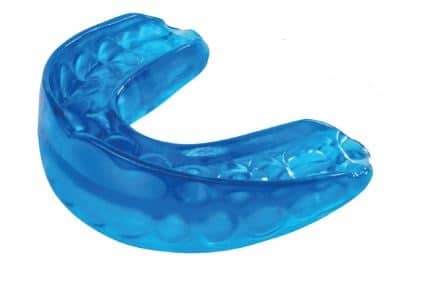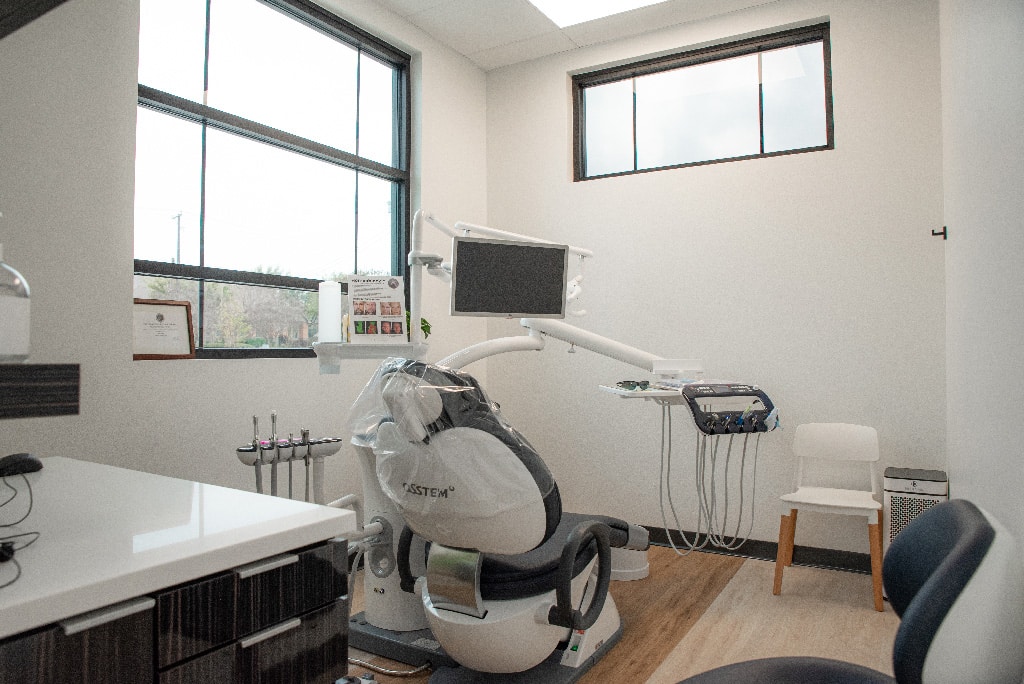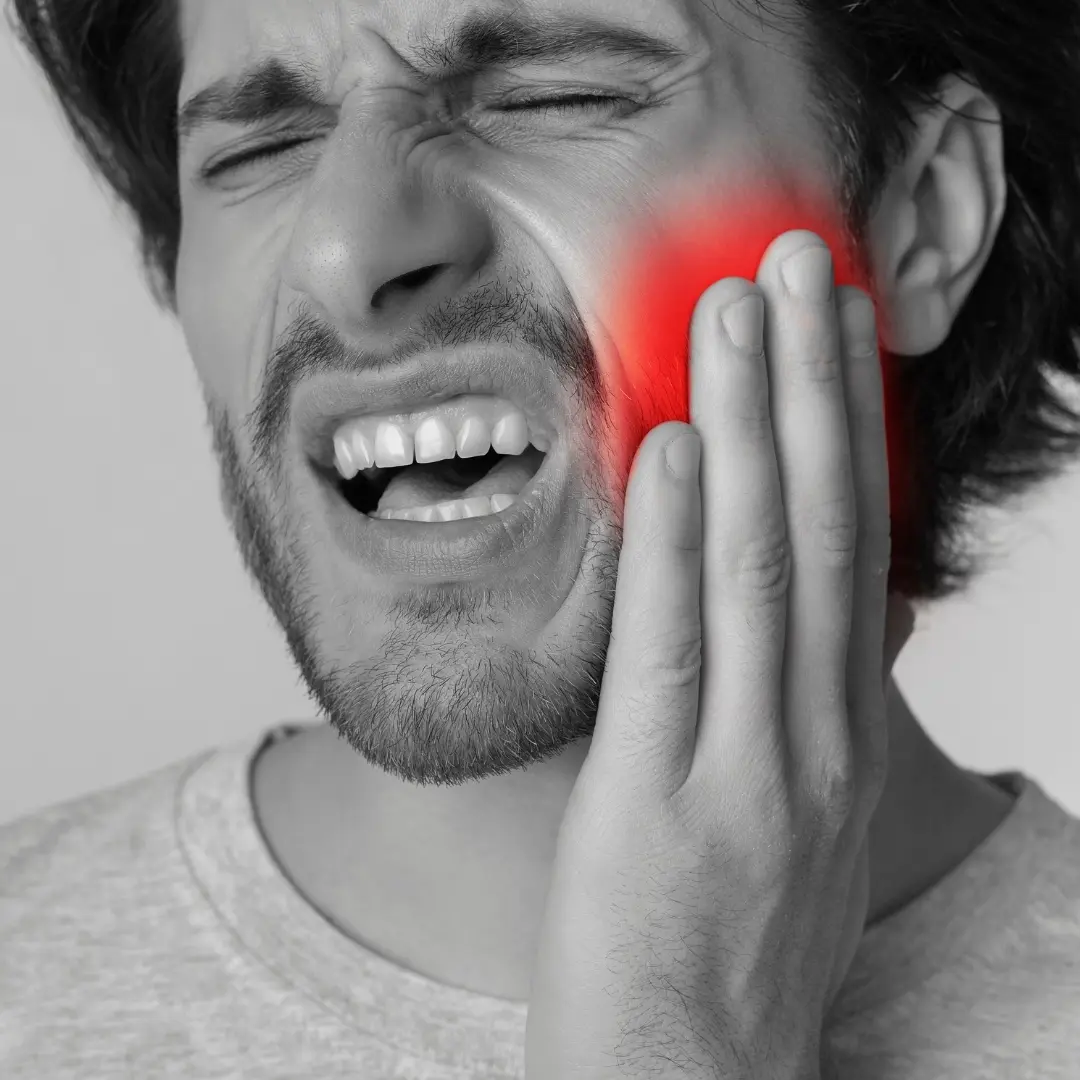
“Breathe better. Sleep better.”
Serving families in Mansfield, Arlington, Grand Prairie, Burleson, Midlothian, Kennedale, Alvarado, and Dallas, Texas
As parents in the greater Mansfield area, you want the best for your child’s future. But what if a hidden sleep disorder is quietly undermining your child’s potential every single night? Sleep apnea in children isn’t just about loud snoring or restless nights—it’s a serious medical condition that can profoundly impact your child’s cognitive development, academic performance, and overall quality of life.
At Central Park Dental & Orthodontics, located at 1101 Alexis Court #101 in Mansfield, Texas, Dr. Jung has been helping families throughout the Dallas-Fort Worth metroplex address pediatric sleep disorders since 2012. Featured on NBC, ABC, FOX, CW, CBS & TEDx, and recognized as an award-winning dentist in D Magazine’s Best Dentists (2021-2025), Dr. Jung combines cutting-edge technology with compassionate care to help children breathe better and sleep better.
Understanding Pediatric Sleep Apnea: More Than Just Snoring
Sleep apnea occurs when your child’s breathing repeatedly stops and starts during sleep. Unlike adults who typically experience obstructive sleep apnea due to excess tissue, children often develop this condition due to enlarged tonsils and adenoids, narrow airways, or developmental jaw issues.
The statistics are alarming: approximately 1-5% of children suffer from sleep apnea, with many cases going undiagnosed. In rapidly growing communities like Mansfield, Arlington, and surrounding Dallas County areas, busy parents often mistake symptoms for normal childhood behavior patterns.
Types of Sleep Apnea Affecting Children
Obstructive Sleep Apnea (OSA): The most common type in children, occurring when throat muscles relax and block the airway during sleep. This creates a cycle of oxygen deprivation and frequent micro-awakenings throughout the night.
Central Sleep Apnea: Less common in children, this occurs when the brain fails to send proper signals to breathing muscles. This type often requires specialized medical intervention.
Mixed Sleep Apnea: A combination of both obstructive and central sleep apnea, presenting unique challenges for diagnosis and treatment.
The Hidden Impact on Child Development
Sleep apnea doesn’t just disrupt nighttime rest—it fundamentally alters how your child’s brain develops and functions. During deep sleep stages, children’s brains consolidate memories, process emotions, and release crucial growth hormones. When sleep apnea fragments this process, the consequences ripple through every aspect of your child’s development.
Cognitive Development Consequences
The developing brain requires consistent, quality sleep to form neural pathways essential for learning and memory. Children with untreated sleep apnea often experience:
Memory Formation Problems: The hippocampus, responsible for forming new memories, requires deep sleep to consolidate daily experiences into long-term memory. Sleep apnea prevents children from reaching these crucial deep sleep stages, making it difficult to retain information learned during the day.
Executive Function Deficits: The prefrontal cortex, which governs planning, decision-making, and impulse control, is particularly vulnerable to sleep disruption. Children may struggle with organizing thoughts, following multi-step instructions, or controlling emotional responses.
Processing Speed Reduction: Sleep-deprived children often think and respond more slowly, affecting their ability to keep up with classroom discussions or complete timed assignments.
Creative Thinking Impairment: REM sleep, often disrupted by sleep apnea, plays a crucial role in creative problem-solving and innovative thinking. Children may struggle with artistic expression or finding novel solutions to problems.
Physical Development Impacts
Sleep apnea affects more than just brain function—it can alter your child’s physical development trajectory:
Growth Hormone Disruption: Growth hormone is primarily released during deep sleep. Children with sleep apnea may experience slower physical development, remaining smaller than their peers despite adequate nutrition.
Immune System Compromise: Quality sleep is essential for immune function. Children with sleep apnea often experience more frequent illnesses, leading to increased school absences and further academic setbacks.
Metabolic Changes: Sleep apnea can disrupt hormones regulating appetite and metabolism, potentially leading to childhood obesity or difficulty maintaining healthy weight.
Academic Performance: The School Struggle
Teachers in Mansfield ISD, Arlington ISD, and surrounding school districts increasingly report children struggling with attention, behavior, and academic performance. Many of these challenges may stem from undiagnosed sleep apnea.
Classroom Challenges
Attention Difficulties: Sleep-deprived children often cannot sustain focus during lessons, missing critical information that builds upon previous concepts. This creates a cascade effect where academic gaps widen over time.
Hyperactivity and Impulsiveness: Paradoxically, sleep-deprived children often appear hyperactive rather than tired. They may fidget excessively, interrupt others, or struggle to remain seated during instruction.
Mood Regulation Problems: Children with sleep apnea frequently experience emotional volatility, leading to conflicts with peers and teachers. This can create negative associations with school and learning.
Reading and Language Delays: Sleep apnea can impact language processing areas of the brain, leading to difficulties with reading comprehension, vocabulary development, and verbal expression.
Long-Term Academic Consequences
Research indicates that children with untreated sleep disorders often:
- Score lower on standardized tests across all subject areas
- Require more special education services
- Experience higher rates of grade retention
- Develop negative attitudes toward learning and school
- Face increased risk of school dropout in adolescence
The competitive academic environment in areas like Mansfield, Arlington, and Dallas makes these impacts particularly concerning for parents hoping to give their children every advantage.
Behavioral and Emotional Effects
Sleep apnea profoundly affects your child’s emotional regulation and social development. The constant fatigue and oxygen deprivation create a perfect storm for behavioral challenges that extend far beyond the classroom.
Social Relationship Impacts
Children with sleep apnea often struggle to form and maintain friendships. Their irritability, emotional outbursts, and difficulty reading social cues can lead to peer rejection and social isolation. In tight-knit communities like Mansfield and surrounding areas, these social difficulties can have lasting impacts on a child’s self-esteem and social development.
Family Dynamics
Sleep apnea affects the entire family system. Parents often report feeling frustrated, helpless, and exhausted from dealing with their child’s behavioral challenges. Siblings may feel overlooked as parents focus on the struggling child, creating family tension and resentment.
Mental Health Considerations
Chronic sleep deprivation increases the risk of depression and anxiety in children. The constant struggle with daily tasks, academic challenges, and social difficulties can create a sense of learned helplessness that persists into adulthood if left untreated.
Warning Signs Every Parent Should Know
Many parents dismiss sleep apnea symptoms as normal childhood behaviors or phases. However, recognizing these warning signs early can make a dramatic difference in your child’s development trajectory.
Nighttime Warning Signs
Loud, Persistent Snoring: While occasional snoring is common in children, loud, persistent snoring every night warrants professional evaluation. The snoring often includes gasping, choking, or snorting sounds.
Restless Sleep: Children with sleep apnea toss and turn throughout the night, often ending up in unusual sleeping positions as they unconsciously try to open their airways.
Night Sweats: Excessive sweating during sleep can indicate the body’s stress response to repeated oxygen deprivation.
Bedwetting: Children who have been dry at night may begin wetting the bed again due to sleep apnea’s effects on nervous system function.
Frequent Nightmares: Sleep fragmentation can increase the frequency and intensity of nightmares and night terrors.
Daytime Warning Signs
Morning Headaches: Frequent morning headaches can result from overnight oxygen deprivation and carbon dioxide buildup.
Chronic Fatigue: Despite spending adequate time in bed, children with sleep apnea wake up tired and remain exhausted throughout the day.
Difficulty Waking: Children with sleep apnea often require multiple attempts to wake up and may appear confused or disoriented upon awakening.
Mouth Breathing: Chronic nasal congestion or structural abnormalities may force children to breathe through their mouths, particularly noticeable during the day.
Concentration Problems: Teachers may report that your child seems to “zone out” during instruction or has difficulty completing tasks that require sustained attention.
The Role of Oral Appliances in Pediatric Sleep Apnea Treatment
While CPAP machines remain the gold standard for adult sleep apnea treatment, children often struggle with mask compliance and comfort. This is where specialized dental solutions become invaluable.
Advanced Oral Appliance Therapy
At Central Park Dental & Orthodontics in Mansfield, Dr. Jung offers revolutionary oral appliances specifically designed for growing children. Unlike adult sleep apnea treatments that simply manage symptoms, pediatric oral appliances can actually guide proper jaw and airway development.
Vivos Guided Growth and Development System: This FDA-registered Class I preventative system helps children breathe properly through their nose by guiding the growth and development of their jaws and oral activity. Vivos Guides work harmoniously to promote a child’s natural growth and development, leading to improved airway function and facial symmetry. With a long history of safety and efficacy spanning over 50 years, treatment can begin for children as young as 3 and may prevent the need for traditional braces later.
The system includes specialized appliances for different developmental stages:
- Vivos Starter: Worn passively while sleeping, promotes nasal breathing, arch and jaw development, and correct tongue posture
- Vivos Grow: Digitally designed for mixed dentition patients with durable material for active daytime wear
- Vivos Way: Designed for full dentition patients with strong material to withstand active wear pressures
- Vivos PEX: State-of-the-art digitally designed pediatric expander offering increased comfort and reduced treatment time
Homeoblock™ Technology: Based on epigenetic orthodontics principles, this appliance promotes natural facial development while improving airway function. The treatment works with the body’s natural growth processes to create lasting changes.
POD® Devices: These patient-specific appliances are designed to optimize tongue posture and airway space, particularly effective for children with tongue-tie or other oral functional issues.
Advantages of Oral Appliance Therapy for Children
Comfort and Compliance: Unlike CPAP machines, oral appliances are comfortable, silent, and don’t require masks or hoses. Children adapt more readily to these devices, leading to better treatment compliance.
Developmental Benefits: Rather than simply managing symptoms, properly designed oral appliances can guide healthy facial and airway development, potentially eliminating sleep apnea as children grow.
Convenience: Oral appliances are portable, require no electricity, and don’t interfere with normal childhood activities like sleepovers or camping trips.
Safety: With proper supervision and regular monitoring, oral appliances present minimal risks compared to surgical interventions or long-term CPAP use in children.
Why Choose Central Park Dental & Orthodontics for Your Child’s Sleep Health
Located conveniently in Mansfield and serving families throughout Arlington, Grand Prairie, Burleson, Midlothian, Kennedale, Alvarado, and Dallas, Central Park Dental & Orthodontics stands apart from other practices in several crucial ways:
Comprehensive Expertise
Dr. Jung’s recognition as an award-winning dentist in D Magazine’s Best Dentists (2021-2025) reflects a commitment to excellence that extends beyond traditional dental care. The practice specializes in the intersection of dental health and sleep medicine, offering a unique perspective on pediatric sleep disorders.
Advanced Technology Integration
While competitors in the Mansfield area may offer basic sleep apnea treatments, Central Park Dental & Orthodontics invests in cutting-edge technology like 3D imaging and computer-guided appliance design. This technological advantage allows for more precise diagnosis and more effective treatment outcomes.
Family-Centered Approach
Unlike larger dental chains or practices that rush through appointments, Central Park Dental & Orthodontics takes time to understand each family’s unique situation. Dr. Jung works closely with parents to develop treatment plans that fit their child’s specific needs and family lifestyle.
Collaborative Care Model
The practice maintains relationships with pediatric sleep specialists, ENT doctors, and other healthcare providers throughout the Dallas-Fort Worth area. This collaborative approach ensures comprehensive care that addresses all aspects of your child’s sleep health.
The Treatment Journey: What to Expect
Understanding the treatment process helps families make informed decisions about their child’s care. At Central Park Dental & Orthodontics, the journey typically follows a structured, child-friendly approach.
Initial Consultation and Assessment
The process begins with a comprehensive evaluation that goes beyond traditional dental examination. Dr. Jung assesses airway anatomy, breathing patterns, and sleep history while making the experience comfortable and engaging for children.
3D Airway Analysis: Advanced imaging technology allows visualization of your child’s upper airway, identifying areas of restriction that may contribute to sleep apnea.
Sleep History Review: Detailed discussion of sleep patterns, behaviors, and family observations helps create a complete picture of your child’s sleep health.
Functional Assessment: Evaluation of tongue posture, swallowing patterns, and oral habits that may impact breathing and sleep quality.
Custom Treatment Planning
Based on assessment findings, Dr. Jung develops a personalized treatment plan that considers your child’s age, developmental stage, severity of sleep apnea, and family preferences.
Appliance Selection: Different children benefit from different appliance types. The treatment plan specifies which device will be most effective for your child’s particular situation.
Timeline Expectations: Clear communication about treatment duration, expected milestones, and follow-up requirements helps families plan effectively.
Lifestyle Modifications: Additional recommendations for sleep hygiene, environmental changes, or complementary treatments that can enhance appliance effectiveness.
Ongoing Monitoring and Adjustment
Successful pediatric sleep apnea treatment requires regular monitoring and adjustment as children grow and develop.
Regular Follow-Ups: Scheduled appointments ensure that appliances continue to fit properly and function effectively as your child’s mouth and airways develop.
Progress Tracking: Objective measures of treatment success, including sleep quality improvements and symptom resolution, guide ongoing care decisions.
Family Education: Continued education about sleep hygiene, appliance care, and recognizing signs of treatment success or concerns empowers families to be active participants in their child’s care.
Long-Term Benefits of Early Intervention
Addressing pediatric sleep apnea early in your child’s development can have profound, lasting benefits that extend far beyond improved sleep.
Academic Achievement
Children who receive effective sleep apnea treatment often experience dramatic improvements in academic performance. Better sleep leads to improved attention, memory, and learning capacity, setting the stage for educational success throughout their school years.
Social and Emotional Development
As sleep quality improves, children often become more emotionally regulated and socially successful. They develop better relationships with peers and family members, building social skills that serve them throughout life.
Physical Health Benefits
Proper treatment can normalize growth patterns, improve immune function, and establish healthy sleep habits that contribute to lifelong wellness.
Prevention of Secondary Problems
Early intervention can prevent the development of secondary issues like depression, anxiety, or behavioral disorders that often accompany untreated sleep apnea.
The Connection Between Oral Health and Sleep Health
Many parents don’t realize the intimate connection between oral development and sleep quality. The same factors that contribute to dental problems often contribute to sleep breathing disorders.
Jaw Development and Airway Space
Proper jaw development creates adequate space for the tongue and maintains open airways during sleep. Children with narrow jaws or recessed chins often have reduced airway space, predisposing them to sleep apnea.
Breathing Patterns and Oral Health
Chronic mouth breathing, often seen in children with sleep apnea, can lead to dental problems including increased cavity risk, gum disease, and abnormal tooth positioning.
Early Orthodontic Intervention
Traditional orthodontics focuses primarily on tooth alignment, but modern approaches consider the impact of treatment on airway function. At Central Park Dental & Orthodontics, orthodontic treatment plans always consider airway health and sleep quality.
Supporting Your Child’s Sleep Health at Home
While professional treatment is essential for pediatric sleep apnea, parents play a crucial role in supporting their child’s sleep health through daily habits and environmental modifications.
Creating an Optimal Sleep Environment
Temperature Control: Maintaining a cool, comfortable bedroom temperature promotes deeper, more restful sleep.
Noise Management: Consistent, quiet sleeping conditions help children reach and maintain deep sleep stages crucial for development.
Light Control: Darkness signals the brain to produce melatonin, the hormone responsible for healthy sleep-wake cycles.
Establishing Healthy Sleep Routines
Consistent Bedtimes: Regular sleep schedules help regulate your child’s internal clock, making it easier to fall asleep and wake up naturally.
Pre-Sleep Rituals: Calming activities before bedtime help children transition from daytime alertness to sleep readiness.
Screen Time Limits: The blue light from electronic devices can interfere with melatonin production, making it harder for children to fall asleep.
Nutritional Considerations
Timing of Meals: Large meals close to bedtime can interfere with sleep quality and may worsen sleep apnea symptoms.
Hydration Balance: Adequate daytime hydration is important, but limiting fluids before bedtime can reduce nighttime disruptions.
Anti-Inflammatory Foods: Some foods may help reduce inflammation in airways, potentially improving sleep breathing.
When to Seek Professional Help
Many parents wonder when snoring or sleep difficulties warrant professional evaluation. Understanding these guidelines can help you make informed decisions about your child’s care.
Red Flag Symptoms
Certain symptoms should prompt immediate professional consultation:
- Loud snoring accompanied by gasping or choking sounds
- Witnessed breathing pauses during sleep
- Severe daytime fatigue despite adequate sleep time
- Significant behavioral changes or academic decline
- Morning headaches or difficulty waking up
The Importance of Early Evaluation
Even if symptoms seem mild, early evaluation can identify developing problems before they significantly impact your child’s development. Many successful treatments are more effective when started early in a child’s growth phase.
Insurance and Investment in Your Child’s Future
Many parents express concern about the cost of sleep apnea treatment. However, it’s important to consider both immediate and long-term costs of untreated sleep apnea.
Long-Term Value
The investment in sleep apnea treatment often pays dividends through:
- Improved academic performance and educational opportunities
- Reduced need for special education services or tutoring
- Better overall health and reduced medical expenses
- Enhanced quality of life for the entire family
Research and Evidence Supporting Treatment
The effectiveness of oral appliance therapy for pediatric sleep apnea is supported by growing research evidence. Studies consistently show that properly fitted and monitored oral appliances can significantly improve sleep quality and related symptoms in children.
Clinical Outcomes
Research indicates that children treated with appropriate oral appliances often experience:
- Significant reduction in sleep apnea severity
- Improved cognitive function and academic performance
- Better behavioral regulation and social relationships
- Enhanced overall quality of life measures
Long-Term Studies
Long-term follow-up studies suggest that early treatment of pediatric sleep apnea can have lasting benefits, potentially preventing the development of adult sleep apnea and related health problems.
Frequently Asked Questions About Pediatric Sleep Apnea
Q: How common is sleep apnea in children? A: Sleep apnea affects approximately 1-5% of children, though many cases remain undiagnosed. The condition can occur at any age but is most common between ages 3-6 when tonsils and adenoids are proportionally largest.
Q: Can children outgrow sleep apnea? A: Some children may see improvement as they grow and their airways naturally enlarge. However, waiting for children to “outgrow” sleep apnea risks missing critical developmental windows. Early treatment can guide proper development and prevent long-term consequences.
Q: Are oral appliances safe for children? A: When properly designed, fitted, and monitored by qualified professionals, oral appliances are generally safe for children. Regular follow-up appointments ensure the appliance continues to fit properly as your child grows.
Q: How long does treatment take? A: Treatment duration varies depending on the child’s age, severity of sleep apnea, and type of appliance used. Some children see improvement within weeks, while others may require months of treatment. Developmental appliances may be used for 12-18 months or longer to achieve optimal results.
Q: Will my child need to wear an appliance forever? A: Unlike CPAP machines that manage symptoms, many pediatric oral appliances are designed to guide proper development and may eliminate the need for lifelong treatment. The goal is to create lasting anatomical changes that resolve sleep apnea naturally.
Q: What if my child won’t wear the appliance? A: Dr. Jung works closely with families to ensure appliance comfort and compliance. Most children adapt quickly to properly fitted appliances, especially when they begin experiencing better sleep and improved daytime function.
Q: How do I know if treatment is working? A: Signs of successful treatment include improved sleep quality, better mood and behavior, enhanced academic performance, and resolution of nighttime symptoms like snoring or restless sleep. Formal sleep studies may be recommended to objectively measure improvement.
Q: Can sleep apnea treatment help with bedwetting? A: Yes, many children with sleep apnea experience bedwetting due to hormonal disruptions and deep sleep fragmentation. As sleep quality improves with treatment, bedwetting often resolves naturally.
Q: What’s the difference between snoring and sleep apnea? A: While all children with sleep apnea snore, not all children who snore have sleep apnea. Sleep apnea involves actual breathing pauses or significant airflow reduction, while simple snoring may not involve breathing disruption. However, loud, persistent snoring in children always warrants professional evaluation.
Q: How does sleep apnea treatment differ from regular orthodontics? A: Traditional orthodontics focuses primarily on tooth alignment and bite correction. Sleep apnea treatment prioritizes airway function and breathing, though it may also improve dental alignment. The appliances used are specifically designed to optimize airway space and promote healthy breathing patterns.
Q: Can sleep apnea cause ADHD-like symptoms? A: Yes, sleep deprivation from sleep apnea can cause symptoms that closely mimic ADHD, including inattention, hyperactivity, and impulsivity. Some children diagnosed with ADHD may actually have sleep apnea as the underlying cause of their symptoms.
Q: What role do tonsils and adenoids play in pediatric sleep apnea? A: Enlarged tonsils and adenoids are common causes of sleep apnea in children. However, surgical removal isn’t always necessary or sufficient to resolve the problem. Oral appliance therapy can often improve breathing without surgery, and when surgery is needed, appliances may be used as complementary treatment.
Q: How does mouth breathing relate to sleep apnea? A: Chronic mouth breathing often indicates nasal obstruction or inadequate nasal airway space, which can contribute to sleep apnea. Mouth breathing also affects oral development and can worsen sleep breathing problems over time. Addressing mouth breathing is often an important component of sleep apnea treatment.
Q: Is sleep apnea hereditary? A: There is a genetic component to sleep apnea risk, including inherited factors like facial structure, jaw size, and tissue characteristics. However, environmental factors and development also play important roles. Having a family history of sleep apnea increases your child’s risk but doesn’t guarantee they will develop the condition.
Q: Can dietary changes help with pediatric sleep apnea? A: While diet alone cannot cure sleep apnea, certain dietary modifications may help reduce inflammation and support better sleep quality. Maintaining a healthy weight is also important, as excess weight can contribute to airway obstruction. However, professional treatment is typically necessary for significant improvement.
Take Action for Your Child’s Future Today
Your child’s sleep health directly impacts their potential for academic success, social development, and lifelong wellness. If you’ve recognized warning signs of sleep apnea in your child, don’t wait for them to “outgrow” the problem. Early intervention can make a profound difference in your child’s developmental trajectory.
At Central Park Dental & Orthodontics in Mansfield, Texas, Dr. Jung combines award-winning expertise with cutting-edge technology to provide the comprehensive care your child deserves. Featured on NBC, ABC, FOX, CW, CBS & TEDx, and recognized in D Magazine’s Best Dentists (2021-2025), Dr. Jung has the experience and dedication to help your child achieve better sleep and reach their full potential.
Located conveniently at 1101 Alexis Court #101 in Mansfield, the practice serves families throughout Arlington, Grand Prairie, Burleson, Midlothian, Kennedale, Alvarado, and the greater Dallas area. The friendly, knowledgeable team understands the concerns of parents and works to create comfortable, positive experiences for children of all ages.
Don’t let sleep apnea steal your child’s potential. The investment in professional evaluation and treatment today can pay dividends in your child’s academic success, social development, and overall quality of life for years to come.
Call Central Park Dental & Orthodontics today at 817-466-1200 to schedule a comprehensive sleep health consultation for your child. Your child’s better tomorrow starts with the action you take today.
You can also visit the practice website to learn more about advanced treatment options and schedule your appointment online. The caring team at Central Park Dental & Orthodontics is ready to help your child breathe better, sleep better, and achieve their full potential.
Central Park Dental & Orthodontics – Where exceptional care meets innovative treatment for the families of Mansfield, Arlington, Grand Prairie, Burleson, Midlothian, Kennedale, Alvarado, and Dallas, Texas.


